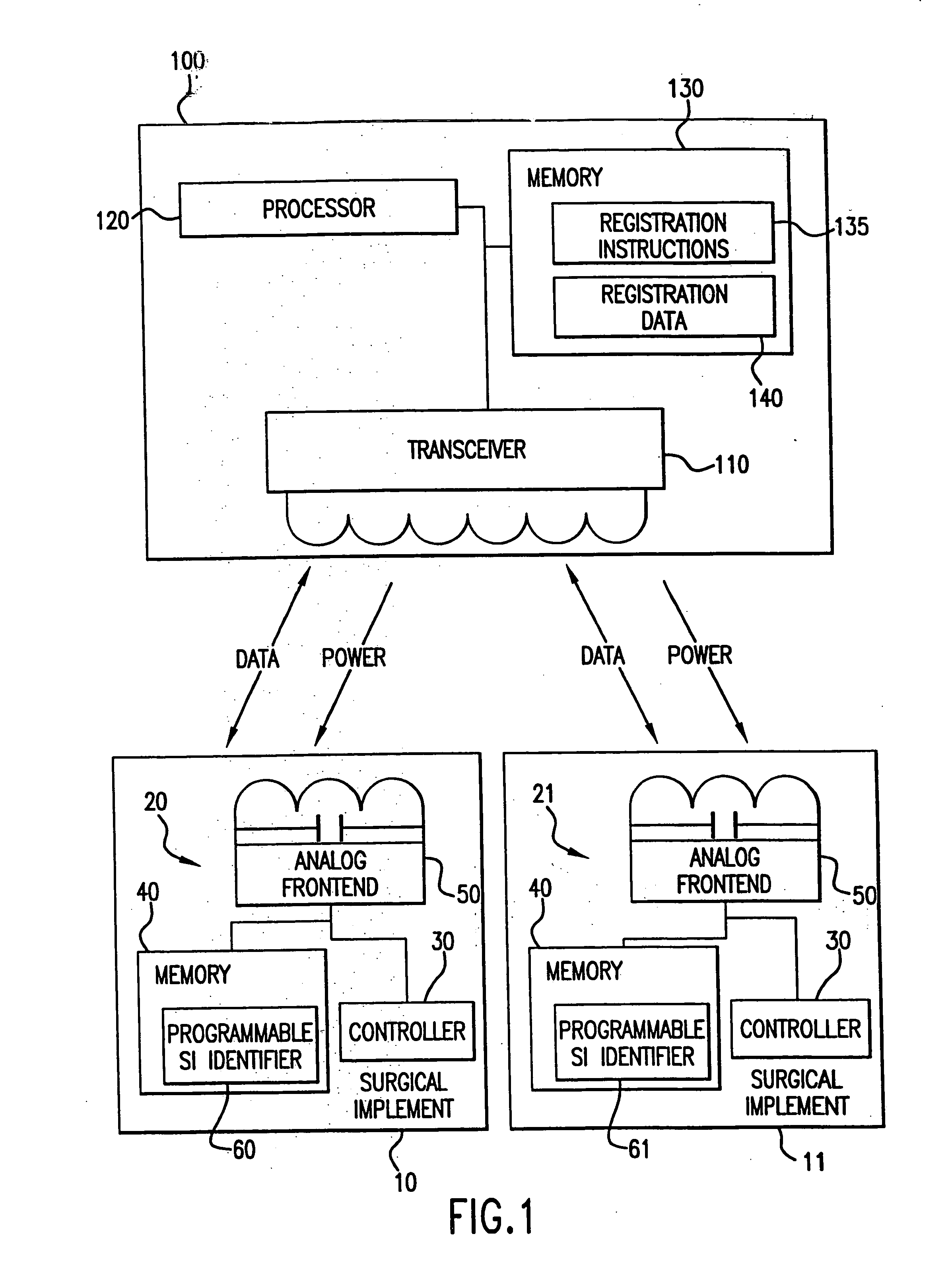Tracking surgical implements with integrated circuits
a technology of integrated circuits and implements, applied in the field of medical implement tracking, can solve the problems of time-consuming methods, inconvenient and error-prone, and materials that are too small to be easily seen on x-rays,
- Summary
- Abstract
- Description
- Claims
- Application Information
AI Technical Summary
Benefits of technology
Problems solved by technology
Method used
Image
Examples
example
[0054] A patient is prepped for a surgical procedure and brought into the operating room. The operating room team comprising, for example, three operating room nurses, two doctors, and an anesthesiologist are also present in the operating room. The operating room nurses are responsible for, among other things, tracking the sponges, scalpels, gauze, forceps, clamps, and other medical implements used during the surgery or surgical procedure. To this end, each surgical implement to be used in this surgery includes an integrated circuit. As the nurses prepare for the surgery, they place each of the surgical implements on or near a sensor system, which is located near to the operating table upon which the patient lies. This sensor system registers each of the implements. As each of the implements is registered, the nurses watch the information appear on a screen of the sensor system, (e.g., a display of a computer) for each of the implements: 1) what each implement is; 2) the time the im...
PUM
 Login to View More
Login to View More Abstract
Description
Claims
Application Information
 Login to View More
Login to View More - R&D
- Intellectual Property
- Life Sciences
- Materials
- Tech Scout
- Unparalleled Data Quality
- Higher Quality Content
- 60% Fewer Hallucinations
Browse by: Latest US Patents, China's latest patents, Technical Efficacy Thesaurus, Application Domain, Technology Topic, Popular Technical Reports.
© 2025 PatSnap. All rights reserved.Legal|Privacy policy|Modern Slavery Act Transparency Statement|Sitemap|About US| Contact US: help@patsnap.com



